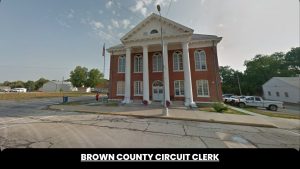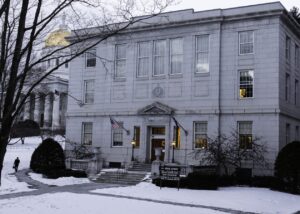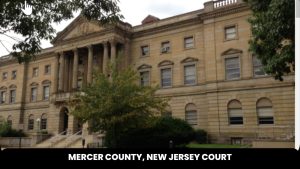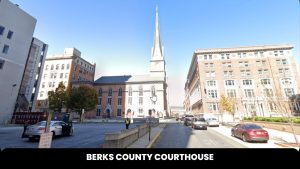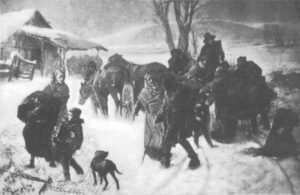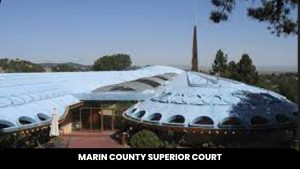District of Kansas
The District of Kansas encompasses the entire state of Kansas and operates out of courthouses in nine cities. This federal court district has a long and storied history since its establishment in 1861. Today, the District continues to serve Kansans through its administration of justice, educational programs, and commitment to equal access under the law.
Overview of the District of Kansas
The District of Kansas oversees federal legal proceedings for the 34 counties that make up the state of Kansas. This section provides an overview of the court’s history, geography, and key personnel.
Establishment and History
The District of Kansas was established on January 29, 1861 through a congressional act signed by President James Buchanan. This was just before the outbreak of the Civil War and the admission of Kansas as a state.
The District operated throughout the war, hearing an influx of land claim disputes as settlers moved west. In the decades that followed, the District managed a growing caseload relating to railroad receiverships, Indian rights, and prohibition.
Some notable cases in District history include:
- Brown v. Board of Education – The landmark 1954 school desegregation case that originated in Topeka.
- Dennis v. United States – A 1948 sedition case against the Communist Party leaders.
- United States v. Microsoft Corp. – An antitrust suit filed in 1998.
Over its 160+ year history, the District has upheld the rule of law through periods of warfare, social change, and economic turmoil.
Geographical Boundaries
The District of Kansas spans the 105,000 square miles that make up the state of Kansas.
Kansas became the 34th state admitted to the Union on January 29, 1861. Unlike some states that are divided into multiple federal judicial districts, Kansas constitutes one unified district.
The District therefore oversees all federal cases arising in counties across Kansas, from densely populated Wyandotte and Johnson in the northeast to rural Greeley and Hamilton in the west.
Judicial Officers and Staff
The District of Kansas has 13 authorized judgeships, although vacancies may exist at any given time. The court currently includes:
- 8 active district court judges
- 3 magistrate judges
- 2 senior judges
Judges are nominated by the President and confirmed by the Senate for lifetime appointments. The District is supported by a Clerk of Court, Probation and Pretrial Services, the U.S. Marshal’s office, and other administrative staff.
The current U.S. Marshal is Ronald L. Miller, who leads the law enforcement arm of the District.
The Work of the District of Kansas
The District handles a full range of federal cases that arise in Kansas, including both criminal and civil matters.
Types of Cases
The District of Kansas has jurisdiction over the following types of cases:
- Criminal cases – These involve violations of federal laws, including drug crimes, white collar crime, and other offenses against the United States. Criminal cases are brought by federal prosecutors.
- Civil cases – Civil lawsuits may be between private parties where the federal courts have jurisdiction, or may involve claims against the government. Common civil suits include patent and copyright issues, environmental lawsuits, admiralty law, bankruptcy appeals, and habeas corpus petitions.
- Magistrate judge matters – Magistrate judges handle misdemeanor cases, conduct preliminary proceedings in criminal felony cases, and decide civil cases that proceed with consent of the parties.
Federal Rules and Procedures
All cases in the District of Kansas follow the Federal Rules of Civil Procedure and Federal Rules of Criminal Procedure. These rules govern things like:
- Requirements for filing complaints, answers, and motions
- Discovery procedures like depositions and interrogatories
- Rules of evidence
- Requirements for jury selection and jury trials
Parties initiating and defending lawsuits in federal court must follow these rules. The District also has its own Local Rules that supplement the federal rules.
Notable Cases Over the Years
With jurisdiction over the entire state, the District of Kansas has presided over many high-profile, complex, and impactful cases through the decades including:
- United States v. Lewis and Clark (1867) – A landmark case affirming water rights of American Indian tribes.
- In re Debs (1895) – An injunction to stop the Pullman railroad strike that impacted national transportation.
- Shawnee Tribe v. Mnuchin (2018) – A tribal challenge to the government’s mismanagement of Indian trust assets.
- Fisher v. United States (2019) – An important case defining insider trading law.
From Kansas’ early history through modern times, the District has shaped state and national policy through its rulings.
Courthouses and Locations
Although the District covers the entire state of Kansas, it holds court in divisional courthouses located in key cities and towns.
Main Courthouse in Kansas City
The Robert J. Dole United States Courthouse in Kansas City serves as the main courthouse of the District.
Located at 500 State Avenue, Suite 380, Kansas City, KS 66101, the courthouse houses the offices of the Chief Judge, Clerk, and other top district officials. This recently renovated building contains 6 courtrooms plus judges’ chambers and court staff offices.
Defendants in custody are held at the nearby CoreCivic Detention Center during court proceedings.
Divisional Courthouses Across Kansas
While Kansas City is considered the main hub, the District regularly holds proceedings across Kansas in 8 other divisional cities:
- Wichita – The second largest city in Kansas with a busy docket.
- Topeka – The state capital with 3 courtrooms.
- Lawrence – Home to the University of Kansas.
- Dodge City – Historic western cattle town.
- Fort Scott – Located on the Missouri border in the southeast.
- Salina – Central Kansas agricultural community.
- Hutchinson – Located in the South Central region along the Arkansas River.
- Leavenworth – On the Missouri border and home to a major federal penitentiary.
Courthouses range from historic buildings like the Birch/Safford Courthouse built in 1892 in Iola, to modern facilities like the recently updated Topeka courthouse. Holding trials across the state facilitates access to justice for Kansans in both urban and rural areas.
Serving the Community
Beyond adjudicating cases, the District Court aims to serve Kansans through educational offerings and access to justice initiatives.
Access to Justice
The court strives to provide equal access to the legal system by:
- Offering assistance to pro se litigants without attorneys
- Providing interpreters and ADA accommodation
- Allowing video teleconferencing for remote court appearances
- Operating a Help Desk to aid visitors
Additionally, the District promotes alternative dispute resolution through its Court-Annexed Mediation Program to help resolve suitable cases outside of court.
Educational Outreach
The District Court supports various educational efforts including:
- Courthouse tours and school visits to teach students about the judicial system
- Internship and volunteer opportunities for law students
- Naturalization ceremonies to welcome new U.S. citizens
- Public seminars on topics like bankruptcy and employment law
Through civic education and engagement, the court promotes understanding of the federal judiciary.
Conclusion
For over 160 years, the U.S. District Court for the District of Kansas has upheld justice and protected rights. Despite covering an entire state, the court effectively provides access through divisional courthouses and public programs. With its long, varied history and continuing evolution, the District of Kansas will remain an impartial forum for resolving disputes under federal law.
Frequently Asked Questions
What is the jurisdiction of the District of Kansas?
The District has jurisdiction over all federal cases and controversies that arise in the state of Kansas, including both criminal and civil matters. This includes cases involving federal laws, the U.S. government, or diversity jurisdiction disputes between parties from different states.
How many courthouses does the District have?
The District has one main courthouse in Kansas City along with eight divisional courthouses located in cities across Kansas including Wichita, Topeka, Lawrence, Dodge City, Salina, Hutchinson, Leavenworth, and Fort Scott.
How are judges selected for the District Court?
District judges are nominated by the President of the United States and confirmed by the U.S. Senate. They receive lifetime appointments under Article III of the Constitution. Magistrate judges are appointed by the District judges to renewable 8-year terms.
What was a significant case in the District’s history?
A landmark case was Brown v. Board of Education filed in Kansas in 1951 which led to the 1954 Supreme Court decision ending school segregation. The case originated from Topeka schools and impacted national education policy.
How can the public learn about the District Court?
The District provides educational offerings like courthouse tours, internships, public seminars, and outreach to schools and civic groups to promote public understanding of the federal judiciary.

